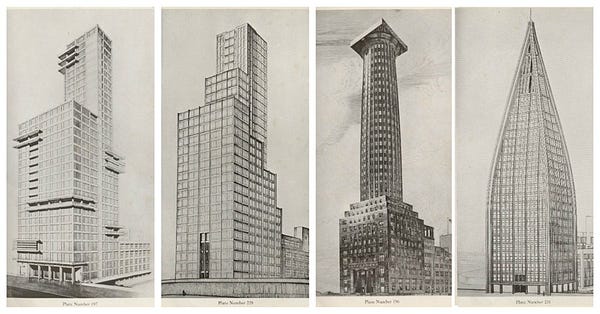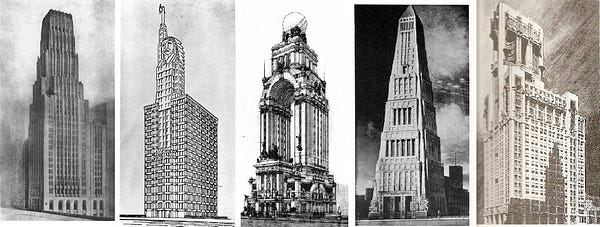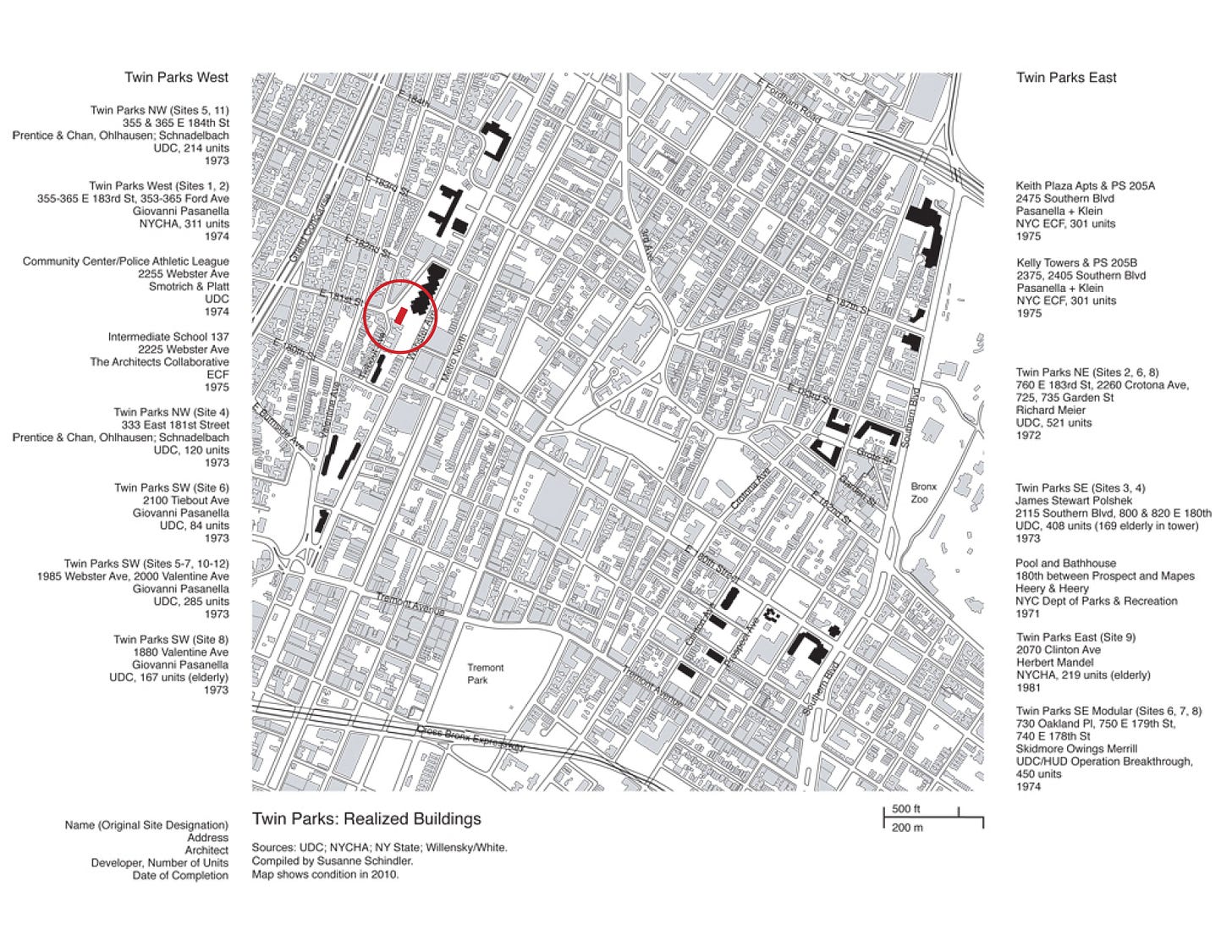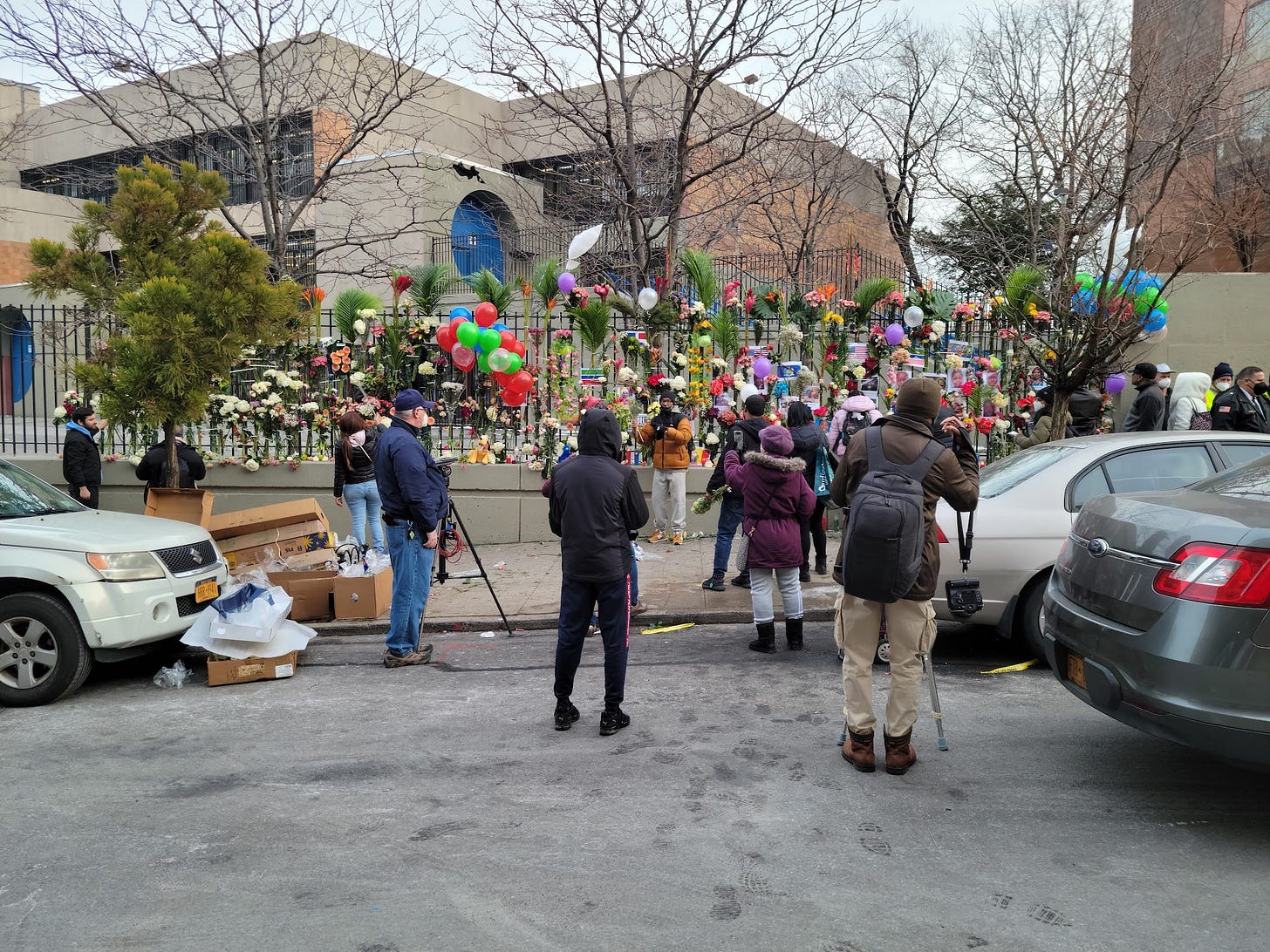Issue 52. If someone forwarded you SKYLINE, sign up here to receive it weekly.
There is a counterintuitive mandate built into the basic parameters of every building’s program. They are supposed to keep us dry, but we pipe rivers of water through the walls. They are supposed to keep us clean, but also store and remove our waste. They are supposed to protect us from fire, but we fill them with stoves and ovens, hearths and heaters.

Henry Grabar wrote for Slate an architecture oriented piece on the site of last week’s tragic fire, the 19 story apartment building 333 East 181st street in the Bronx. Grabar faces the building’s legacy as an important and indeed celebrated affordable housing design: Twin Parks North West, Site 4. Built in 1973, it was part of a set of buildings, Twin Parks, that encompassed over 2,000 affordable units spread across the area between Crotona and Bronx parks (therefore the name). Intentionally woven into the neighborhood, with different architects, they were positioned as an anti-project housing effort. In the June 1973 issue of Architectural Forum, which commits 13 pages to the project in its feature, “Tale of Twin Parks,” Suzanne Stephens and Kenneth Frampton named 333 East 181st Street (Site 4) as one of the best of the set. In fact, according to Urban Omnibus, the government agency responsible for the project, the Urban Development Corporation, liked the building so much it built three more just like it in Coney Island.
Grabar pulls heavily from that earlier 2013 piece in Urban Omnibus, in which some of the original architects simply walk the site together. Already then it was abundantly clear that the buildings were poorly maintained, with many of the communal spaces severely compromised or fenced off altogether. But they still had their fans. At 333, one man, Rafael, pulled the architects aside to show a tattoo of the building’s facade on his arm: “I’ve lived here 29 years. All my life. I love this building.”
I visited the building on Thursday. It is not so far from where I live, so I made the trek. 333 East 181st Street and the line of western Twin Parks projects are all arrayed along an escarpment, essentially a cliff (“impossible sites”, as Architectural Forum put it), so to walk along them is to walk up and down the cliff, and see the many ways in which each building navigates it: 333 (site 4) perches on the top, with a dramatic (currently closed) staircase making its way down. Sites 1 and 2 butt up into the cliff, enlisting it as the 4th wall of an internal courtyard. Sites 5 and 11 span the cliff, turning it into a set of terraces.

They are not beautiful buildings. Already in the 1973 feature in Architectural Forum the architects describe the many construction compromises forced upon them by their contractors (including, in at least one building, the substitution of electric for steam heat). That said, they are ingenious, inventive, with clearly good bones. There is a new tower going up in the neighborhood, Twin Parks Terrace, that is adjacent to the building on sites 1 and 2 (which is undergoing extensive renovations) and is all framed out. I asked a passerby about it, “It’s going to be great apartments - just look at it! But of course these apartments (gesturing towards 333) were also once great.”
As Grabar emphasizes in his conclusion, it can be easy to blame - or credit - a design for results that are in fact the consequences of care and maintenance.
I thought by visiting five days after the tragedy, I might find the building in a quieter state. Instead there was still a phalanx of emergency workers controlling access, with a set of news cameras looking on. There was also a memorial forming up, on the fence of the adjacent school (by The Architects Collaborative, 1975). Someone asked me if I wanted to add a bundle of roses. I did, carefully threading them into the fence.
A DISPATCH
1/13: American Utopia
“I’d always imagined America to be the absolute pinnacle of capitalist property relations, and here was a book that didn’t just show [American communes] being a historical phenomenon…This was a real moment of in which I started to think about America as an origin point for a different kind of communism” said Jack Self, director of the REAL Foundation, speaking to a virtual audience for the launch of the first English translation of Kommunen in der Neuen Welt 1740-1972 [“Communes in the New World”], by Liselotte and Oswald Mathias Ungers. He was joined by the book’s translator and editor Winston Hampel, the authors’ daughter Sophia Ungers, former Ungers employee Anja Sieber-Albers (both of whom serve on the board of the Ungers Archive for Architectural Research) as well as the book’s designers, Christopher Lawson and Seb McLauchlan. Written for a popular German audience contemporaneous with the communal movement of the late 60s, Self described the book as a “cult object,” presenting essays about the histories and conditions of communes in the United States. Hampel described the complicated task of working with quotations that often lacked citations, and the “treasure chest of material” that survived in the archive from the Ungers research and trips to communes, which Sophia participated in as a child. Lawson and McLauchlan positioned these materials in a revival of the original design, sticking as close as possible to the original form while correcting inconsistencies and introducing elegant touches to allow the translation to be seen as a new layer siting upon the original text. Asked by Sophia why he thought this book would be important for architects today, Self said: “We’re talking about real people who lived in these (communes) and committed themselves. That gives me a lot of hope that if we are dissatisfied with contemporary society, there is a possibility for change, and Kommunen is one part of that history.” - Nicholas Raap
EYES ON SKYLINE
(The most-clicked links from Skyline 51)
The speculative billionaire + Bjarke Ingels Group city from scratch that is currently “scouting” for locations, Telosa. Interesting side story, there was a powerful but ill-fated group that wanted to build a perfect city in Minnesota in the 1960s, with a remarkably similar pitch. They picked a nearly empty corner of Minnesota as a site, only to learn its residents would rather the area remain empty.
WRITING at SCHOOL OF VISUAL ARTS
The MA in Design Research, Writing & Criticism at School of Visual Arts has a deadline coming up this Saturday: applications started by January 15 will be considered for first-round scholarship funding.
SVA is a friend of NYRA, many of their graduates write and edit for us, and we share their belief in combining smart criticism with original journalism, so if you are looking for a strong advanced design writing program, consider applying.
IN THE NEWS
…ArchDaily rebranded, and acquired DesignBoom. Now awaiting the emergence of the Dezeen+DAAily Singularity...
…a false story lit the internet on fire by claiming Governor Hochul planned to use eminent domain to move Madison Square Garden by seizing a park and moving it there…
…Ian Volner pointed out in Metropolis that while 2021 saw a wild building boom, no one is writing about the actual, well, buildings: “However the bumper crop of 2021 buildings ends up being received by a far-distant posterity, we must begin the process of receiving and analyzing them—and coming to terms with their impact— sooner rather than later… Amidst the flood of actual buildings—big and small, good and not-so-good—we have spent relatively little time truly looking at them, and a great deal more time prosecuting increasingly obscure intellectual turf wars, endlessly escalated in a meme-based arms race on battlefields like Facebook and Twitter.”
….Cooper Union has started the search for a new dean…
…speaking of unions, late last Thursday night (1/6) the Student Workers of Columbia reached a Tentative Agreement with the administration. Some first reactions here, here, and here…
…Oliver Wainright visits Senegal and finds an overlooked vernacular, from the 60s…
…Marianela D’Aprile writes for Anjulie Rao’s newsletter, “Weathered”, about a subway car, "Increasingly, cities feel like webs of private spaces connected by ever-fraying threads of public space."
…speaking of public space, Justin Moore lays out his case for a department of Care…
…Samuel Medina reviews SO-IL’s Amant Foundation in Brooklyn, “Amant is SO–IL’s first stand-alone structure in New York…This group didn’t help to found an “ism,” let alone a “movement,” which requires more than elective affinities to get off the ground. But for Idenburg and Liu, who are married, elective affinities are the stuff of life and practice.”
CALL FOR DESIGNS
Less than a week ago we partnered with citygroup to issue a call for designs for a 100% affordable 5 WTC in support of the Coalition for a 100% Affordable 5 WTC.
Turns out our single deliverable, a rendering from a fixed perspective, matches that from the 1922 Chicago Tribune Tower Competition:




114 teams have registered so far, from Brazil, India, Hong Kong and even Brooklyn, so maybe we make it to 260 as well.
Since issuing the call, we have gotten to know members of the coalition better, both through an information session on Monday (video available here) and in a 2.5 hour long public hearing on Wednesday, in which Todd Fine pointed out (publicly) that almost every person who spoke up in favor of the tower as planned was in fact in the employ of the developers.
DATELINE
The week ahead...
Tuesday, 1/18
A Classical Overture: An Introduction to the Language of Classical Architecture, Part I with Erik Evens
8:00 PM | ICAA
Wednesday, 1/19
Inclusive Spaces: Decentralizing Solar Economy with Provides Ng, Alberto Fernandez
1:00 PM | The Bartlett School of Architecture
The Challenges of Sustainable Rural Living with Andrew Freear, Rusty Smith, Rural Studio
7:00 PM | The Architectural League of New York
Thursday, 1/20
International Streets: Safer Blocks in Barcelona with Xavi Matillas Ayala, Sílvia Casorrán Martos
11:30 AM | Urban Design Forum
Towards Another Architecture with Alice Brownfield
12:30 PM | The Farrell Centre
To pitch us an article or ask us a question, write to us at: editor@nyra.nyc.
For their support, we would like to thank the Graham Foundation and our issue sponsors, Tod Williams Billie Tsien Architects and Thomas Phifer.
To support our contributors and receive the Review by post, subscribe here.






